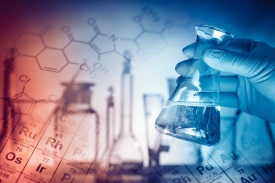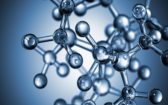Issues of Neurosurgery, vascular neurosurgery, neuro oncology, spinal surgery and spinal cord
conférence médicale
Preliminary Programme
DAY 1 SPINAL ONCOLOGY
9.00 OPEN. WELCOME ADDRESS.
9.09 – 9. 30 Modern aspects of spinal neurooncology
9.40 – 10.10 The Development of Operative Neurosurgical Techniques
10.20 – 10.50 Principles and practice of spinal cord tumors surgery
11.00 – 11:30 Innovative techniques in the treatment of spinal pathologies in the aging spine
11.30 – 12.00 Primary and Metastatic Tumors of the Spine
12.10 – 12.40 Sacrum tumors
12.50 – 13.20 Rare spinal tumors
13:30-14:00 image optimization in the treatment of spinal diseases
14:00-14:30 Thoracoscopic spine surgery
14.30 – 15.30 Déjeuner
15.30 – 15:50 Modern approaches tosacral tumors
16.00 – 16.20 Surgical treatment of patients with multilevel spine tumors
16.30 – 16.50 Intramedullar tumors in children
17.00 – 17.20 Spine deformities in childhood and adolescence
17:30-18:00 Discussion
DAY 2 DEGENERATIVE SPINE
9.00 – 9.30 Principles of Degenerative Spine Surgery
9.40 – 10.10 Spine surgery today: achievements and paradoxes
10.20 – 10.50 Surgical approaches to the cervical spine
11.00 – 11.30 Pause café
11.30 – 12.00 Minimal invasive surgery for degenerative spine diseases
12.10 – 12.40 Robotic assistance in spine surgery
12.50 – 13.20 Surgical treatment of lumbar spine stenosis
13.30 – 14.00 Diagnosis and management of syringomyelia
14:00-15:00 Déjeuner
15.00 – 15.20 Principles of degenerative spine treatment
15.30 – 15.50 Surgical approaches to thoracolumbar and cervicohoracic junctions
16.00 – 16.20 Principles of correction degenerative deformities
16.30 – 16.50 Tubular endoscopic surgery of degenerative spine
17.00 – 17.30 Discussion
Key priorities for development of new technologies in neurosurgery related issues as improving the efficiency of neurosurgical care, and finding new treatments for patients based on the involvement of achievements related disciplines, based on the latest neurobiological research sciences.
The problem of timely, early diagnosis of neurosurgical pathology, comprehensive treatment and postoperative rehabilitation of patients is one of the most important in neurosurgery and has great social significance.
Providing top quality neurosurgical care in neurooncology by minimizing surgical approach, minimizing surgical trauma (microsurgery) using computerized microscopes, advanced technical support of all phases of operation – laser, ultrasonic, cryogenic technology, navigation technology, endoscopic technique, robotic laser systems.
Surgical treatment of vascular diseases of the brain by using new developed and implementation of well-known “open” and endovascular surgery in patients with pathology of brain vessels and neck (spiral stents, balloon-catheter, operating mikrokatetery), the introduction of intraoperative monitoring of the development of new methods combat vasospasm.
Treatment of patients with spine-brain pathology is performed using advanced modern advanced minimally invasive surgical technologies microsurgical intervention, stabilization of the spine, prosthetic vertebral discs: microdiscectomies of cervical, thoracic and lumbar spine, intervertebral disc prosthesis with preservation of functional mobility of the spine; microsurgical technique and endovascular exclusion spinal arteriovenous malformations (AVM), percutaneous vertebroplasty, the use of stabilizing systems in tumors of the spinal cord, transpedicularly, layered systems of fixation, surgical interventions for spinal pain syndromes DREZ (DREZ)-chirurgie, spinal implanted pacemaker).
Developed and implemented new advanced neurosurgical technology to overcome the effects of lesions of the central and peripheral nervous systems to recover lost or improvement of disturbed functions (motor, language, visual, sensory, etc.)..
The Doctrine of neurosurgical beam of high technology based on the identification of pathophysiological disorders of the central nervous system, preoperative planning, analysis of the effectiveness of treatment tactics, determining the balance of new structural and functional changes that occur after treatment.
Developed standards that are used in practical schools , due to many factors not meet modern requirements neyroradiology specialized diagnostics, the main task of which should be not only economical, mais, above all, research that will optimize the action of the doctor-radiologist and in each situation to help the patient at the present level of world medicine.
In the arsenal neuroradiology service the world’s leading institutions in addition to traditional CT, CT-AG, IRM, MR-AG, angiography has long used: spectral study of focal lesions of the brain and skull bones and spine, functional MRI, dynamic perfusion techniques, virtual neyroskopiya. Mathematisation these methods and their comparison not only to organize communication and diagnostic evaluation of pathogenic diseases, but also provide high performance treatment process and minimize its damaging action.
The need for discussion at the conference of new technologies in neurosurgery due to socio-medical significance of the problems of modern neurosurgery.
Application of new technologies will improve the performance of specialized skilled care general population and will reduce mortality, postoperative mortality, disability, quality of life of patients postneurosurgery interventions and increase the competitiveness of the domestic medical equipment and medical products that save state funds to purchase the product foreign firms.
Conference targets and topics:
1. Continue the widespread introduction of new technologies for diagnosis and treatment of patients with neurosurgical pathology in routine medical practice.
2. To carry out the development and implementation of new and existing diagnostic technologies to the study of their diagnostic value: CT scan, IRM (+ MR-angiography, MR spectroscopy – a regional study of metabolism; MR-mapping – identification of functionally important centers of the cerebral cortex; MR-thermography – registration of the temperature gradient during laser thermal and super-fast obtaining MRI images – Intraoperative MR imaging, MR guided biopsy, ANIMAL DE COMPAGNIE – getting ideas about histrostrukturu, detecting recurrence, SPECT – determining the degree of anaplasia, the degree of vascularization, métabolisme, tumor resistance to chemotherapy; methods histostruktury diagnosis of tumors, histochemistry, genetic research. Conduct study of the problem and himiochutlyvosti radioresistance and resistance of tumors. Perform method development photodynamic therapy (photosensitivity), “dark” photodynamic therapy, photodynamic therapy of combined laser hyperthermia and, the development problems of quality of life of patients with tumors the brain.
3. Develop methods of improving the efficiency of removal of tumors functionally important brain regions using modern navigation systems.
4. To conduct the study of genetic changes in glial and connective tissue tumors to determine the structural and molecular features of tumors of the brain that determine the aggressiveness of their growth (physical inability, proliferative activity, imunofenotyping of tumors) and identify potential targets for individualized therapy tarhetnoyi and malignant neoplasms, which will offer new approaches to shift the balance between the processes of proliferation, differentiation and apoptosis in cells toward elimination of undesirable mutations and gene translocation. To carry out the development of comprehensive diagnostic and therapeutic measures to overcome the established criteria of risk metastatic tumors of the nervous system in children under age group.
5. Improve neurosurgical care to newborns with intracranial hemorrhage: identify factors that contribute to the development of intracranial hemorrhage in newborns, identify opportunities neyrovizualizied modern methods of examination for the diagnosis of intracranial hemorrhage in newborns, improve prevention and treatment in various forms of intracranial hemorrhage in newborns.
6. To study the effectiveness of techniques for surgical treatment of the artery-venous malformations, arterial aneurysms using modern methods – microsurgery, neyrointerventsiyni methods radiosurgery.
7. To investigate mechanisms of action of epidural electrical stimulation to restore function in spinal cord traumatic injury to, the study of pathological mechanisms of formation of the functional activity of motoneurons in the spinal cord syndrome posttraumatic spasticity.
8. Implement electrical stimulation deep brain structures in torziyniy dystonia, épilepsie, pain syndromes.
9. Investigate the use of systems for elektrostymuleted n.vagus stimulation for epilepsy, brain stimulation and pozamozkovyh structures for the treatment of pain syndromes and spasticity, use neyroheliv defect in the spinal cord, containing neurotrophic factors and provide an opportunity to sprout axons of spinal cord.
10. Develop best practices for restoring visual analyzer based on the study of the effectiveness of implantation of polymer gel materials and olfactory bulb cells, mesenchymal cells of bone marrow cells and embryonic brain.
Conditions de participation des participants:
Forfait d'inscription participation à une séance scientifiques, matériel de conférence
Vols:
50 euros ( Sens Unique) : http://wizzair.com/?language=EN
Des questions
Contactez NBScience
Département d’éducation/conférence:






